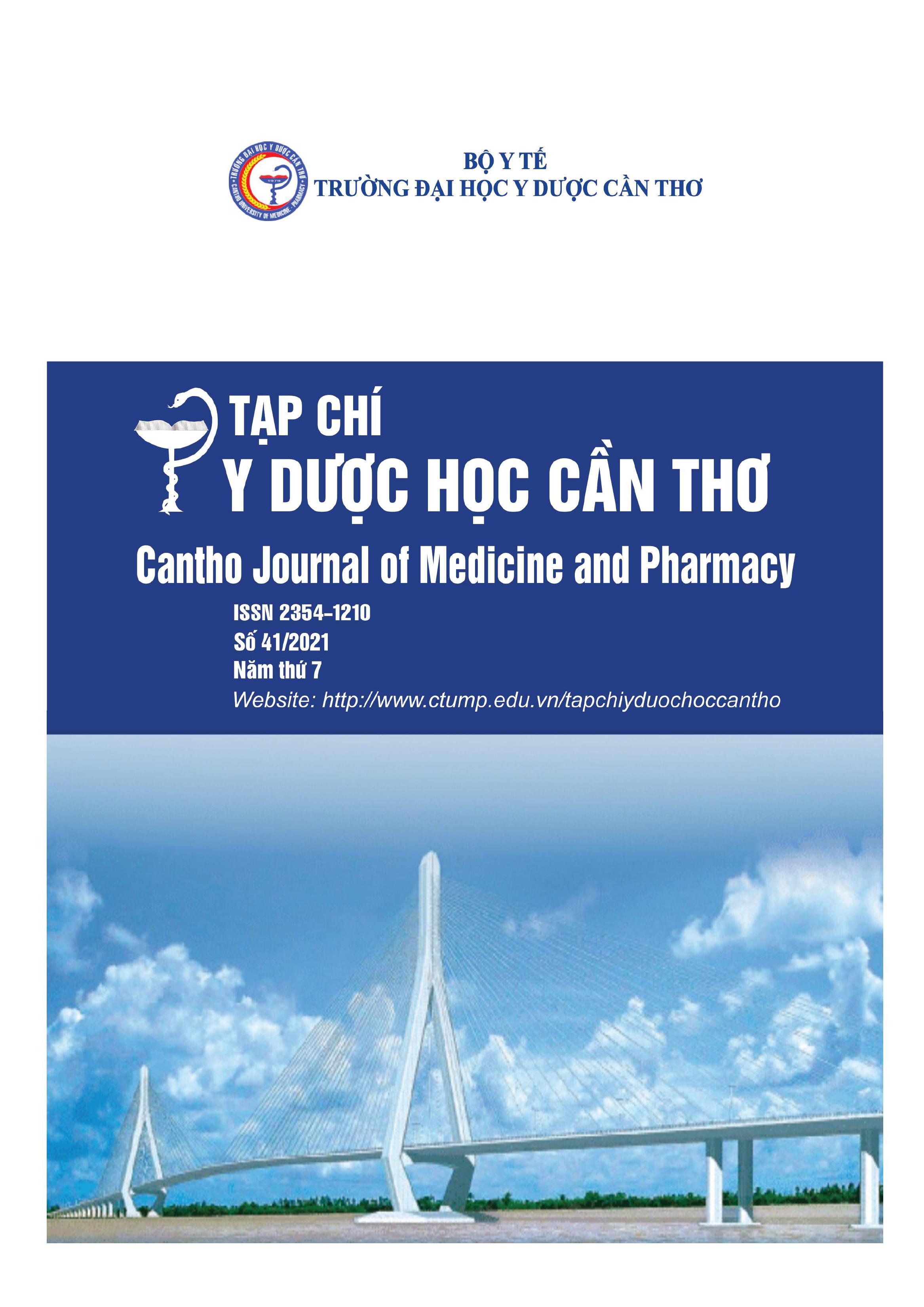SURVEYING POLYMORPHISMS OF CYP2C19*2, CYP2C19*3 GENE IN BRAIN ANEURYSMS PATIENTS TREATED BY FLOW DIVERSION STENT AT S.I.S CAN THO INTERNATIONAL HOSPITAL
Main Article Content
Abstract
Background: Preliminary study evaluates the CYP2C19 gene, which has phenotypes affecting clopidogrel metabolism in patients with cerebral aneurysms with transgenic stents. Objectives: Identify gene polymorphism CYP2C19*2, CYP2C19*3 in brain aneurysm patients used flow diversion with stents by Digital subtraction angiography at S.I.S Can Tho International Hospital. Materials and methods: Cross-sectional study on 30 brain aneurysm patients put stents for flow diversion by Digital subtraction angiography at S.I.S Can Tho International Hospital. Results: 46.67% of patients with gene CYP2C19*2, CYP2C19*3 have the reduced metabolic function of Clopidogrel. Among them, the patients with gene CYP2C19*2 account for the most 85.71%. The phenotype homozygous CYP2C19 accounts for 28.57%, and the remaining is reduced functional heterozygous gene. Conclusion: The percentage of patients carrying gene CYP2C19*2, CYP2C19*3 is high and the allele heterozygous phenotype occurs the most among the patients. Screening for gene polymorphism CYP2C19*2, CYP2C19*3 is important for Clopidogrel dose adjustment in brain aneurysm patients carrying gene against Clopidogrel treated by stenting for flow diversion.
Article Details
Keywords
Brain aneurysm, Flow diversion stent, Clopidogrel, CYP2C19
References
2. Nguyễn Thị Mai Ngọc (2018), Sử dụng xét nghiệm đa hình gen CYP2C19 trong thực hành lâm sàng, Luận án tiến sĩ.
3. Vũ Thị Thơm (2018), Mối liên quan giữa độ ngưng tập tiểu cầu với kiểu gen CYP2C19*2, CYP2C19*3 và một số yếu tố khác trên 54 bệnh nhân đau thắt ngực không ổn định tại Viện Tim mạch Việt Nam, Tạp Chí Khoa Học Đại Học Quốc Gia Hà Nội. 34, tr.74-81.
4. Trần Xuân Thủy (2020), Nghiên cứu đặc điểm hình thái phình mạch máu não và đánh giá kết quả ngắn hạn can thiệp đặt stent chuyển hướng dòng chảy điều trị phình mạch máu não, Tạp chí y dược lâm sàng 108. 15.
5. Benjamin K. Hendricks, James S. Yoon, Kurt Yaeger, Christopher P. Kellner, J Mocco, Reade A. De Leacy, Andrew F. Ducruet, Michael T. Lawton and Justin R. Mascitelli (2019), Wide-neck aneurysms: systematic review of the neurosurgical literature with a focus on definition and clinical implications, Journal of Neurosurgery. 133, pp.1-7.
6. Dietmar Trenk, Steen Dalby Kristensen, Willibald Hochholzer and FranzJosef Neumann (2013), High on-treatment platelet reactivity and P2Y12 antagonists in clinical trials, Journal of Thrombosis and Haemostasis. 109, pp.834-845.
7. Jersey AM, Foster DM (2021), Cerebral Aneurysm, pubmed.
8. Mega, Jessica L (2010), Reduced-function CYP2C19 genotype and risk of adverse clinical outcomes among patients treated with clopidogrel predominantly for PCI: a meta-analysis, pubmed. 304, pp.1821-30.
9. Menka Lazareska, Vjolca Aliji, Elizabeta Stojovska-Jovanovska, Jasna Businovska, Vladimir Mircevski, Milenko Kostov and Marija Papazova (2018), Endovascular treatment of wide neck aneurysms, Macedonian Journal of Medical Sciences. 6, pp.2316-2322.
10. White, Wardlaw and (2020), The detection and management of unruptured intracranial aneurysms, pubmed. 123 pp.205-221.


